Environmentalists and foodies alike have been hailing bugs as the future of eco-friendly protein. That’s great news for chefs and bug scientists with a taste for insects, including Marcel Dicke, an ecological entomologist at Wageningen University in the Netherlands who gave a 2010 TED talk called “Why Not Eat Insects?” (His dish of choice: dragonfly larvae.)
But recent news that eating crickets might not be as sustainable as we thought—they can’t, it turns out, survive on a diet of straight food waste—hasn’t dampened Dicke’s enthusiasm for insects as the future of food. “Different insect species have different feed requirements,” he says. “The fact that several large insect farms have recently been set up in the U.S., South Africa and the Netherlands—using organic side streams—shows that insects can be reared on such substrates.” Crickets, and 2,000 species of their insect friends, are currently being consumed around the world, Dicke says, and can make “a very good contribution to a sustainable food security.”
So we went to celebrity chefs and bug enthusiasts for advice on the tastiest way to prepare them.
Chef Aaron Sanchez’s Grasshopper ‘Bacon’ Bits
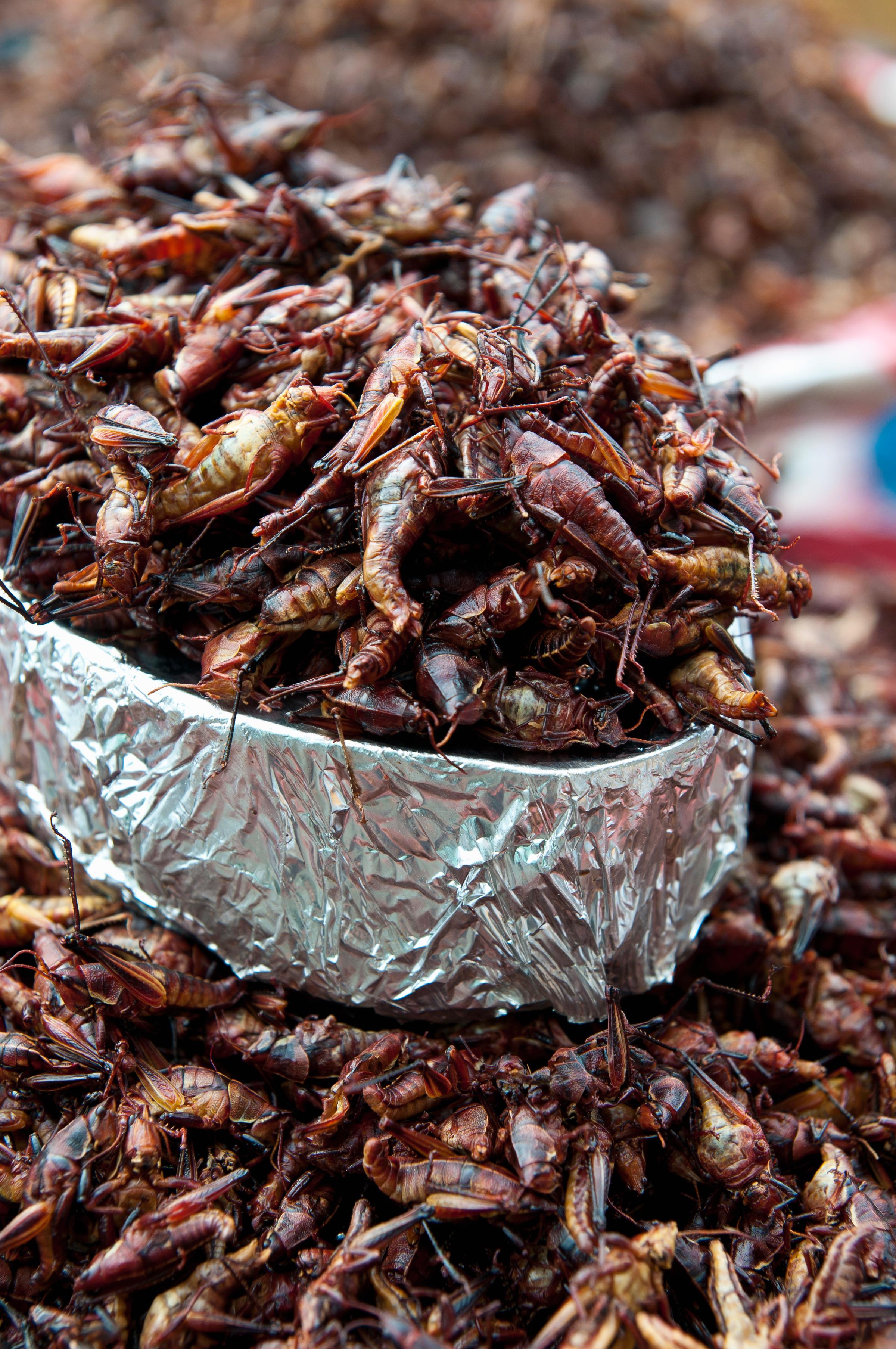
“Crispy grasshoppers, better known as Chapulines, are a delicacy in Oaxaca and are popular all over Mexico. They’re often eaten as a snack on their own or used as a toping to add crunch and texture, like we offer on our guacamole at [my restaurant] Johnny Sánchez. Think Mexican bacon bits. After being cleaned thoroughly, we toast them on a comal—a traditional Mexican griddle—with chili and lime to add spice and flavor. They’re absolutely delicious and are a great source of protein.”
Aarón Sánchez is chef and partner at Johnny Sánchez in New Orleans
Chef Gordon’s Deep-Fried Tarantulas
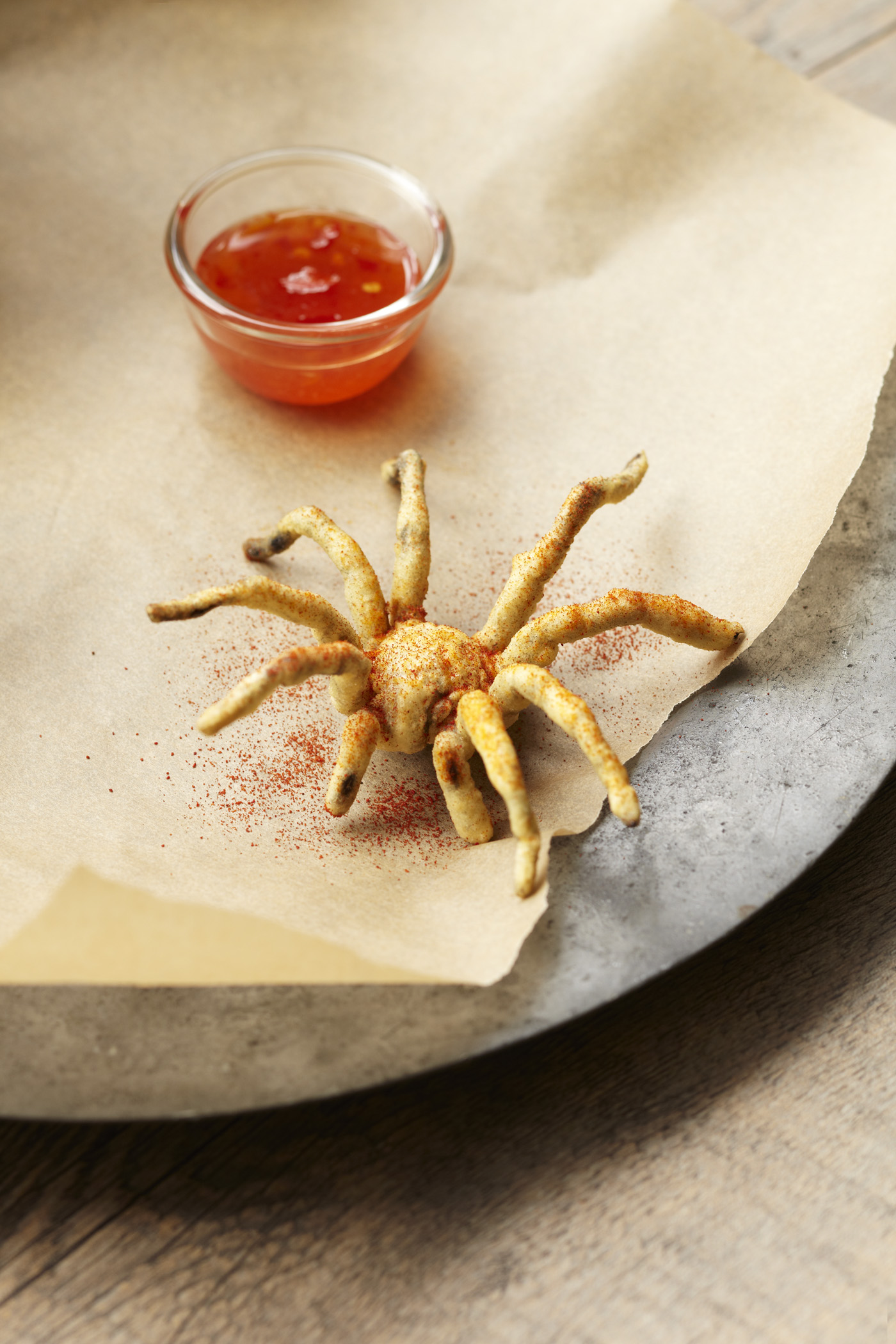
“First I freeze the spiders—a humane way to dispatch them—then I remove the abdomen, which is basically a fluid-filled sac, and singe off the body hairs, using a butane torch. I dip them in tempura batter and drop in hot oil. The end result looks good and tastes even better. I served these to guests, including astronomer Neil deGrasse Tyson, at the 111th Explorers Club Annual Dinner at the American Museum of Natural History in NYC.”
David George Gordon, known as the Bug Chef, is author of the Eat-a-Bug Cookbook: 40 Ways to Cook Crickets, Grasshoppers, Ants, Water Bugs, Spiders, Centipedes, and Their Kin
Meryl Natow’s Mealworm Arancini

“We’ve made mealworm lettuce wraps, cricket fried rice, and mealworm arancini, which taste just like typical arancini! If you didn’t know that insects were included, you probably never would guess. What’s great is the added protein helps keep you fuller longer.”
Meryl Natow is the co-founder and creative director of Six Foods, a company that makes cricket-based tortilla chips
Chef Karen Barroso’s Garlicky Grasshopper Mix

“In Mexico, there are 398 different species of edible insects. Grasshoppers, or chapulines, are among the most traditional and can be found in the U.S. I like to sauté chapulines from Oaxaca with garlic cloves, chile de arbol oil, sea salt and Spanish peanuts. This is a traditional snack that you can find at the markets in Oaxaca. We serve it at the bar as an accompaniment for mezcal.”
Karen Barroso is the owner and head chef of Guajillo in Arlington, VA
Chef Rick Bayless’ Worm-Salt Margarita

“You’ve probably had margaritas rimmed with salt, but what about a mezcal cocktail rimmed with sal de gusano, an Oaxacan chile-salt with pulverized with toasted maguey worms? Salty in flavor, the coarsely ground worms are the perfect accompaniment to a cocktail we call El Mural, made with mezcal, various citrus juices and agave syrup.”
Rick Bayless is a chef, restaurateur, author and winner of Top Chef Masters 2009
Chef Laurent Quenioux’s Ant Larvae
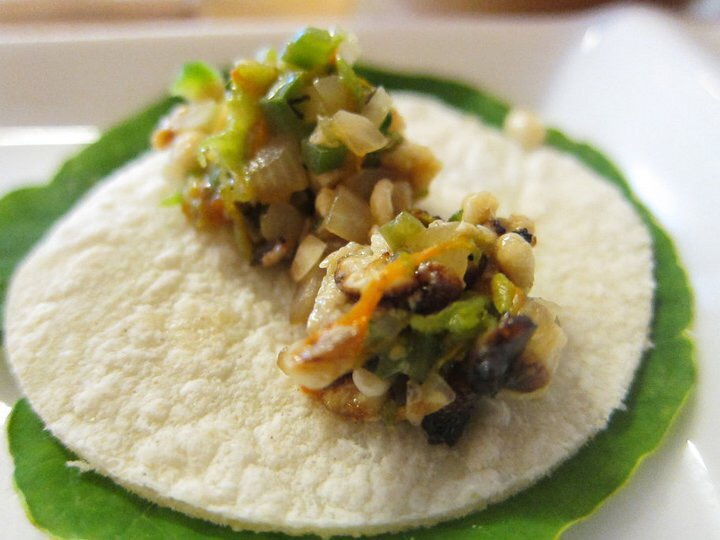
“We make blinis with ant eggs and caviar, and a three-egg dish of escamoles, quail eggs and salmon roe. We have been making an escamole [ant larvae] quiche, and, using just the albumen that drains out when the eggs are frozen, meringue. Our signature dish is a corn tortilla resting on a nasturtium leaf and topped with escamoles sautéed in butter with epazote, shallots, and serrano chilis, served with a shot of Mexican beer and a lime gel.
Their delicate eggy qualities, their wildness, their unexpected appearance—like condensed milk with little pebbles in it—and the responsibility I feel to train the American palate to accept them inspires me to do gastronomy with bugs. The insects will be the solution to feed all those masses, but how do you get insects on the daily table in America? In the last twenty years, we grew here in America from iceberg lettuce to baby frisée. Insects are like any other ingredient: a challenge and an opportunity.”
Laurent Quenioux was the executive chef and owner of Bistro LQ in Los Angeles; he now operates pop-ups across Los Angeles
Chef Zack Lemann’s Lightly Fried Dragonflies

“Cooking dragonflies usually involves some sweat equity on the front end. Swinging a net in classic insect nerd fashion in the heat of south Louisiana summers is typically the only way you can come by large numbers of these notoriously elusive bugs. But after having collected and frozen them, they can be made to taste very much like soft-shelled crab.
I treat dragonflies like fish in that they are run through an egg bath and then dredged in seasoned fish fry. Prior to the cooking of these critters, take equal parts butter, soy sauce, and creole or country-style Dijon mustard (about a tablespoon of each), mix, and heat in a small skillet for a couple of minutes on a low setting. This can be set aside in a little bowl. Then you need just two burners: on one, vegetable oil is over a medium heat in a shallow pan. On the other, sliced portobello mushrooms sauté in a very small amount butter with just a sprinkle of garlic powder.
When the oil is hot enough for frying, dragonflies go in for about thirty seconds, get flipped, and then cook for another thirty. This is perhaps a good time to note that these are delicate insects. In order to insure that they stay intact, I recommend repurposing an entomological tool known as featherweight tweezers and turning them into a culinary device: these wonderful forceps can be used to hold dragonflies by the wings both when prepping them for the pan (the egg and flour procedure) and when they are being turned in and removed from hot oil.
The scientific name for the order of insects to which dragonflies belong is Odonata. When we make this word English, we call them odonates. And so, in seeking a clever, alliterative name for this truly scrumptious dish, I came up with Odonate Hors d’Oeuvre. I describe it as lightly fried dragonflies on sautéed portobello mushroom.”
Zack Lemann is the Executive Bug Chef at the Audubon Butterfly Garden and Insectarium in New Orleans, Louisiana
Chef Hugo Ortega’s Mescal Worm Tacos
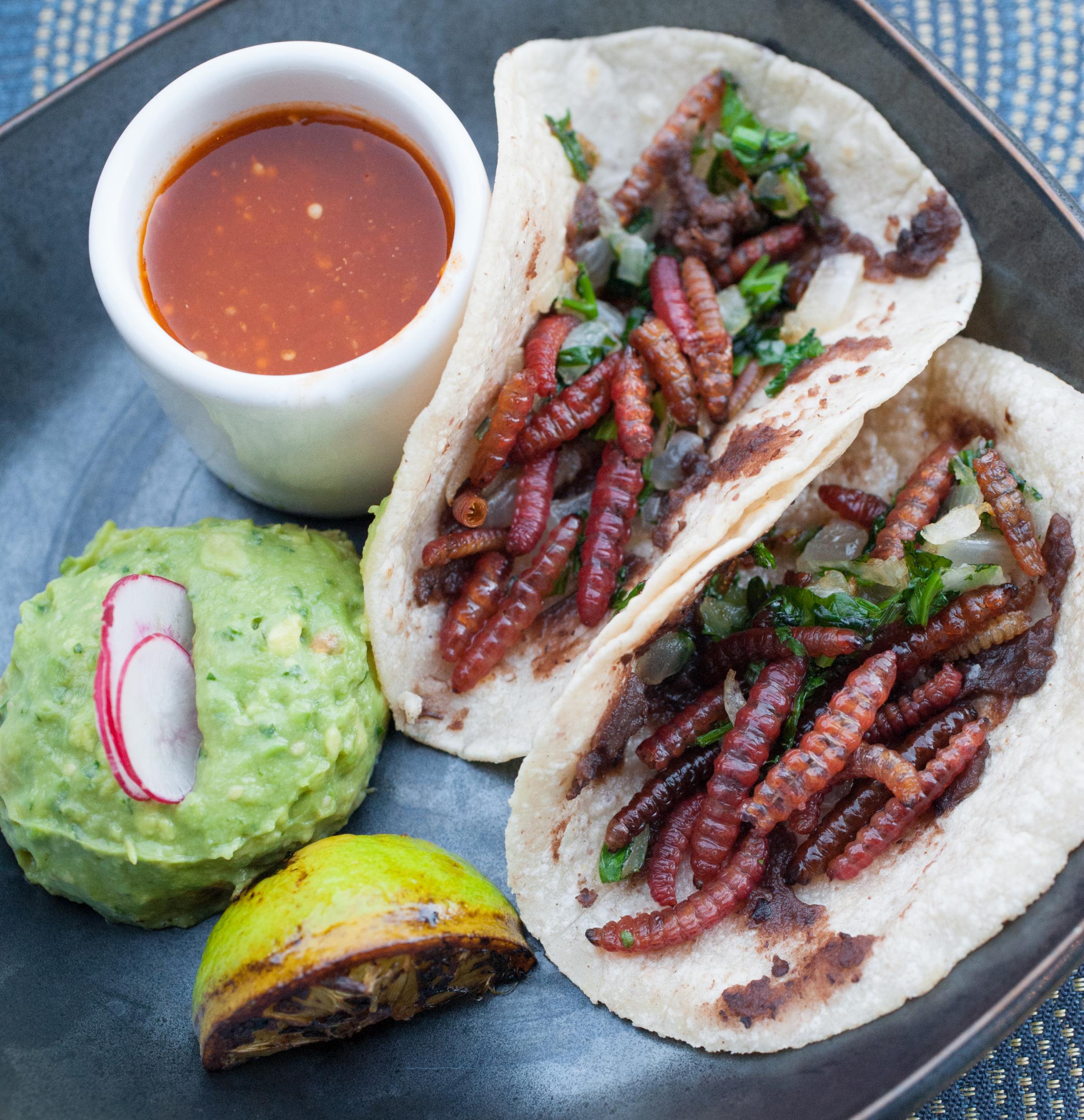
“My favorite way to enjoy insects like chapulines (grasshoppers), gusanos de maguey (mescal worms) and escamole (any eggs) is fresh, but in order to get these items from Mexico to the U.S. they must be dehydrated. They are very high in protein and, once rehydrated, you can use them in so many ways! Gusanos de maguey are more fatty, and they resemble the taste and texture of crisp bacon. I like to cook them with white onion, butter and olive oil and finish with fresh parsley and serrano peppers.”
Hugo Ortega is executive chef and co-owner of Hugo’s, Backstreet Cafe and Caracol in Houston, Texas and a four-time James Beard Award finalist
Chef Hugo Ortega’s Tomatillo Grasshoppers

“Chapulines taste more earthy and grassy, and I prepare them similar to the gusanos and accompany with tomatillo sauce, guacamole and fresh tortillas for a nice snack or lunch. I also love them in tamales, quesadillas or tostadas and they are nice fried. I also like to prepare sal de chapuline—grasshopper salt—to salt the rim of a mezcalrita for a true taste of Oaxaca!”
Hugo Ortega is executive chef and co-owner of Hugo’s, Backstreet Cafe and Caracol in Houston, TX, and a four-time James Beard Award finalist
Meghan Curry’s Critter Fritters

“My very favorite edible insect recipe was a Spicy Critter Fritter made with ground crickets, aka cricket flour. Cricket flour bakes and cooks much like other nut flours with slightly great binding ability and a nice nutty aroma and flavor.”
Meghan Curry is the founder of Bug Vivant, a culinary website devoted to edible insects
Chef Cesar Moreno’s Grasshopper Almond Flour Cake
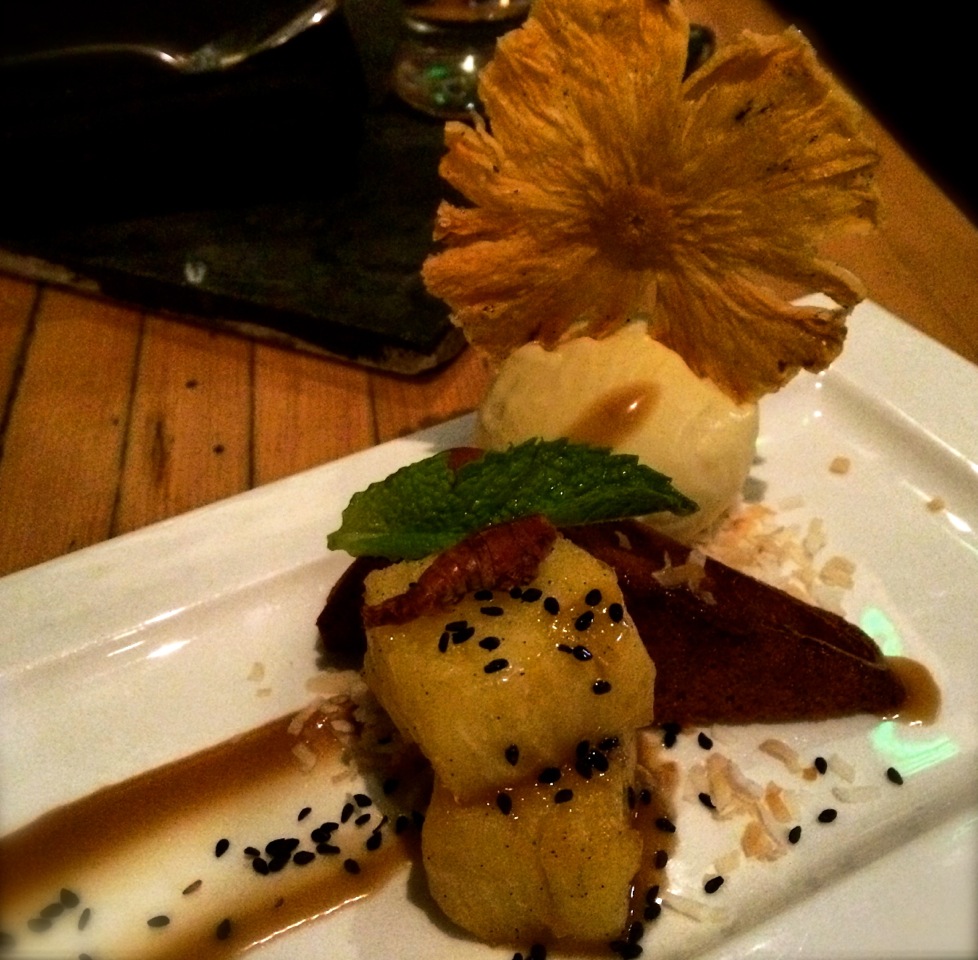
“New on the dessert menu for spring is the Piña Loca Cake: Grasshopper almond flour cake, roasted pineapple squares and coco loco ice cream leche quemada sauce. I like to use insects when baking because they add a nuttiness to the flour. They are also great to use as a salt or garnish. They can be covered with chocolate. And best of all they are a lean protein and very healthy.”
Cesar Moreno is the Pastry Chef at The Black Ant in New York City
Chef Will Wienckowski’s Roasted Cicadas
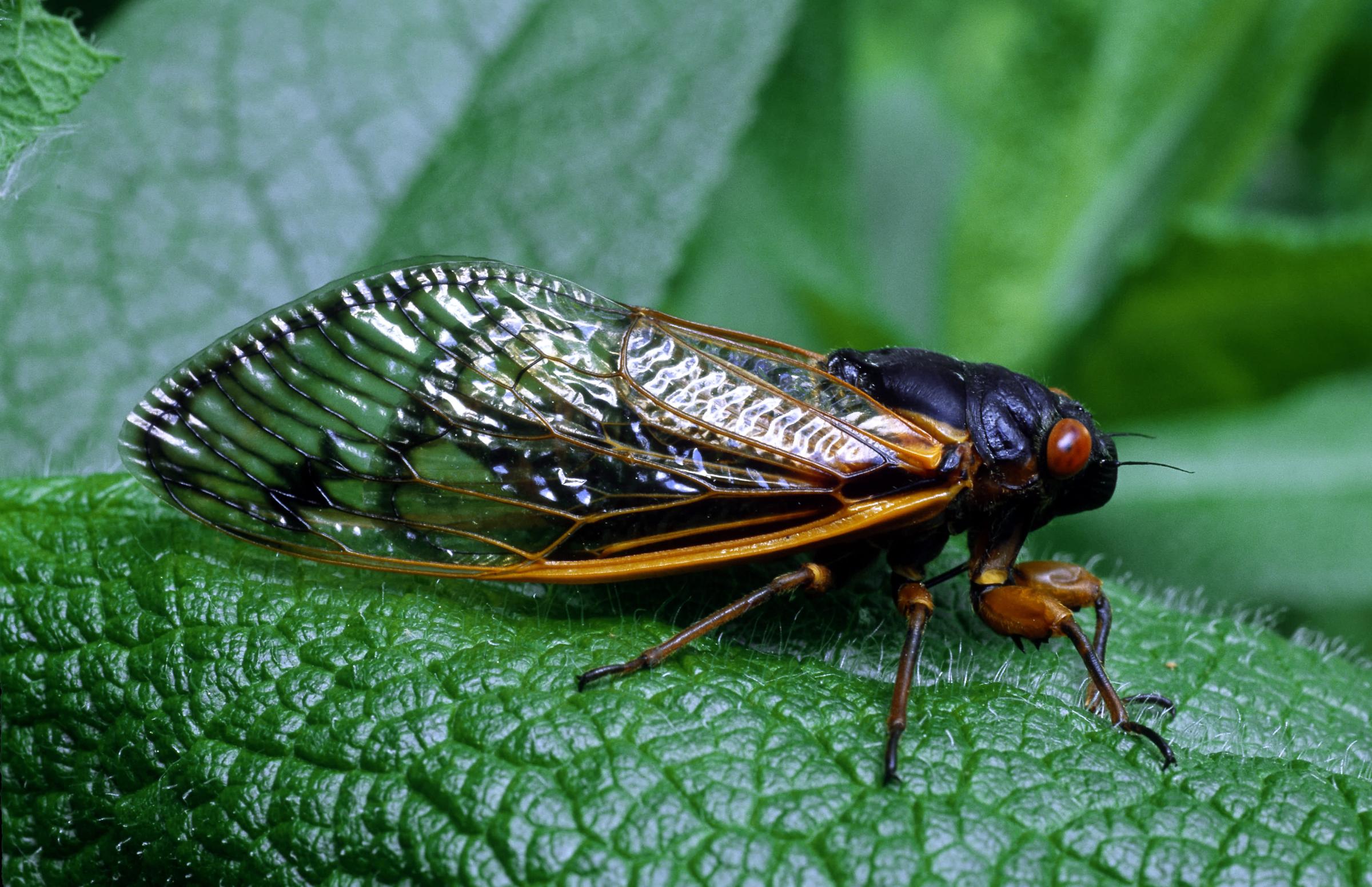
“I had an opportunity to cook 17-year cicadas two summers ago. They were great dry roasted with a little salt. The roasted cicadas also worked very well in a sausage made with monkfish. I think roasted insects can be good in anything that could use a little variety in texture.”
Will Wienckowski is the head chef at Ipanema Cafe, a vegetarian restaurant in Richmond, VA
Marcel Dicke’s Dragonfly Larvae

“My best recipe for a wonderful insect dish: take fresh dragonfly larvae, wash them; take fresh peppermint leaves and deep-fry the dragonfly larvae with the peppermint leaves briefly. Serve with white rice. Delicious. (The only problem is the availability of the dragonfly larvae—I have seen them for sale in Dali, China, a city on a lake.)”
Marcel Dicke is an ecological entomologist at Wageningen University in the Netherlands and co-author of The Insect Cookbook—Food for a Sustainable Planet
Chef Richard Sandoval’s Grasshopper Guac
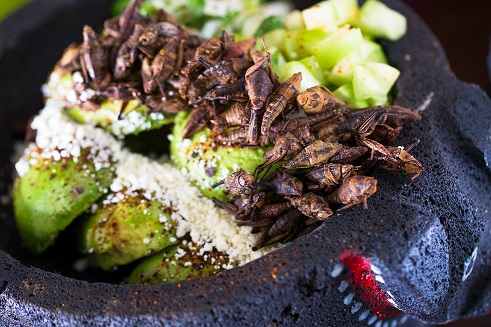
“Here’s a traditional preparation from southern Mexico that includes dried grasshoppers: Ripe avocados are mixed table-side with fresh green tomatillos, cotija cheese, onions, cilantro, lime, sea salt, and a dash of red chile cascabel powder. The combo offers fresh flavors and textures, not the least of which is the crunchy, nutty taste of the grasshoppers.
Grasshoppers, or chapulines as they’re called in Spanish, have been part of the Mexican diet since the Aztec and Mayan civilizations. In some parts of Mexico, like Oaxaca where they are a staple, you see chapulines in everything—guacamole, tacos, quesadillas and queso fundido. Before your write off grasshopper guacamole here in Denver, know that grasshoppers are not only very popular in Mexico but they are a traditional food being revived by foodies.”
Richard Sandoval is a chef, restaurateur, author and television personality
Chef Julian Medina’s Grasshopper Tacos
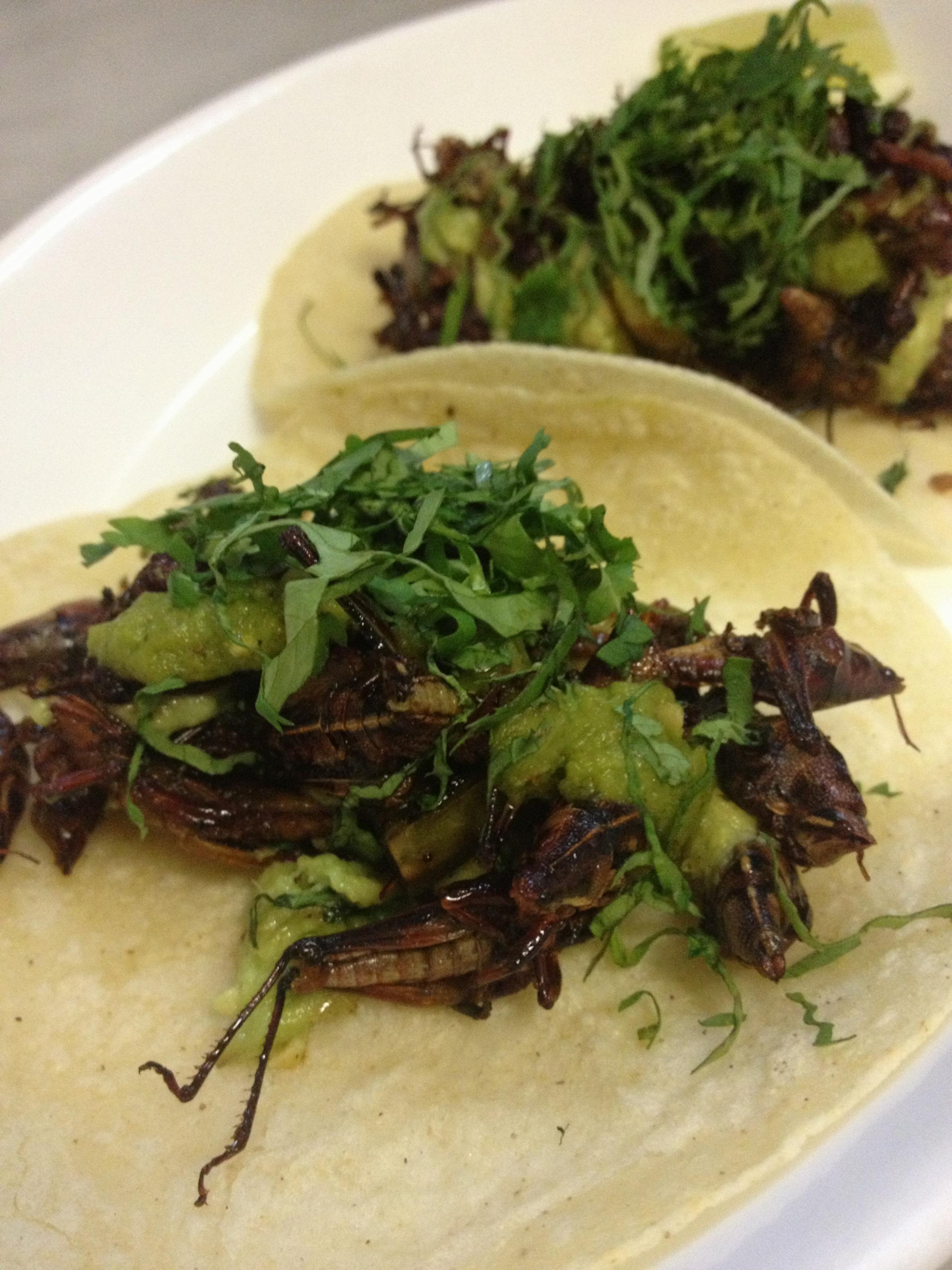
“When I was organizing Toloache’s menu, I knew we had to have Tacos de Chapulines on the menu. Grasshoppers are a delicacy so deeply rooted in Mexican culture, and I really wanted to share them with New York. To create the taco I saute dried grasshoppers with jalapenos, then complement them in the tortilla with tomatillo salsa and guacamole.”
Julian Medina is owner and chef of Toloache in New York City
Megan Miller’s Cricket Cobbler
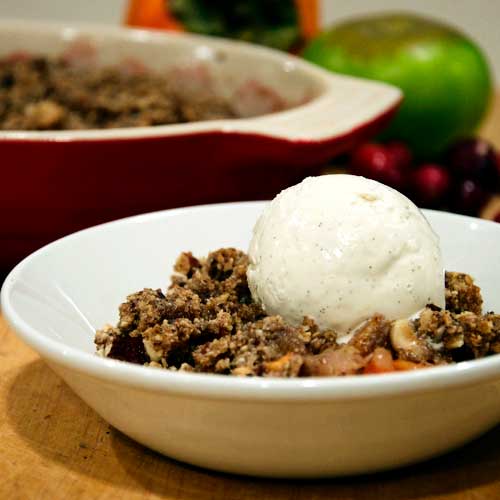
“Asking for one favorite way to prepare any insect is kind of like asking for a single way to prepare any bird—you could of course roast them, fry them or boil them, but the resulting texture and flavor will vary according to the species and what it was fed. At Bitty Foods, we make snacks and baked goods using crickets that have been fed an organic diet and then dried and milled into a fine powder. For foolproof results, I’d suggest starting with our Bitty baking flour and substituting it cup-for-cup for wheat flour in your favorite cookie or cake, or even cobbler recipe.”
Megan Miller is the founder of Bitty Foods, a cricket flour company
Daniella Martin’s Mealworm Slaw
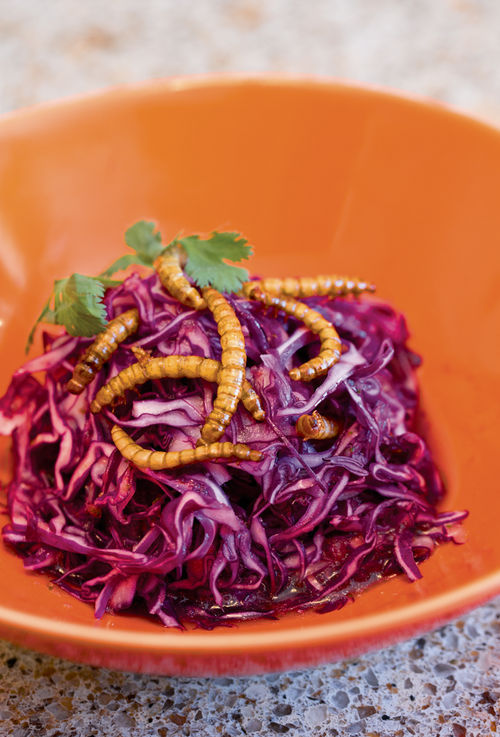
“My favorite way to prepare insects is to toast them in the oven until crispy. Then they can be salted and eaten plain, added to salads, or ground up into flour for use in baked goods or smoothies.”
Daniella Martin is author of Edible: An Adventure into the World of Eating Insects and the Last Great Hope to Save the Planet and host of Girl Meets Bug
Chef Monica Martinez’s Mealworm Pecan Pie

“Oven toasted, and there’s no need to use any oils as most insects are very fatty—good fatty! They don’t contain cholesterol or saturated fats. Mealworms make a great dessert item as they have a very nutty flavor, they could replace pecans for a pecan pie.”
Monica Martinez is the creator of Don Bugito, a food cart of edible insects in San Francisco
Chef Curtis Stone’s Night Crawlers
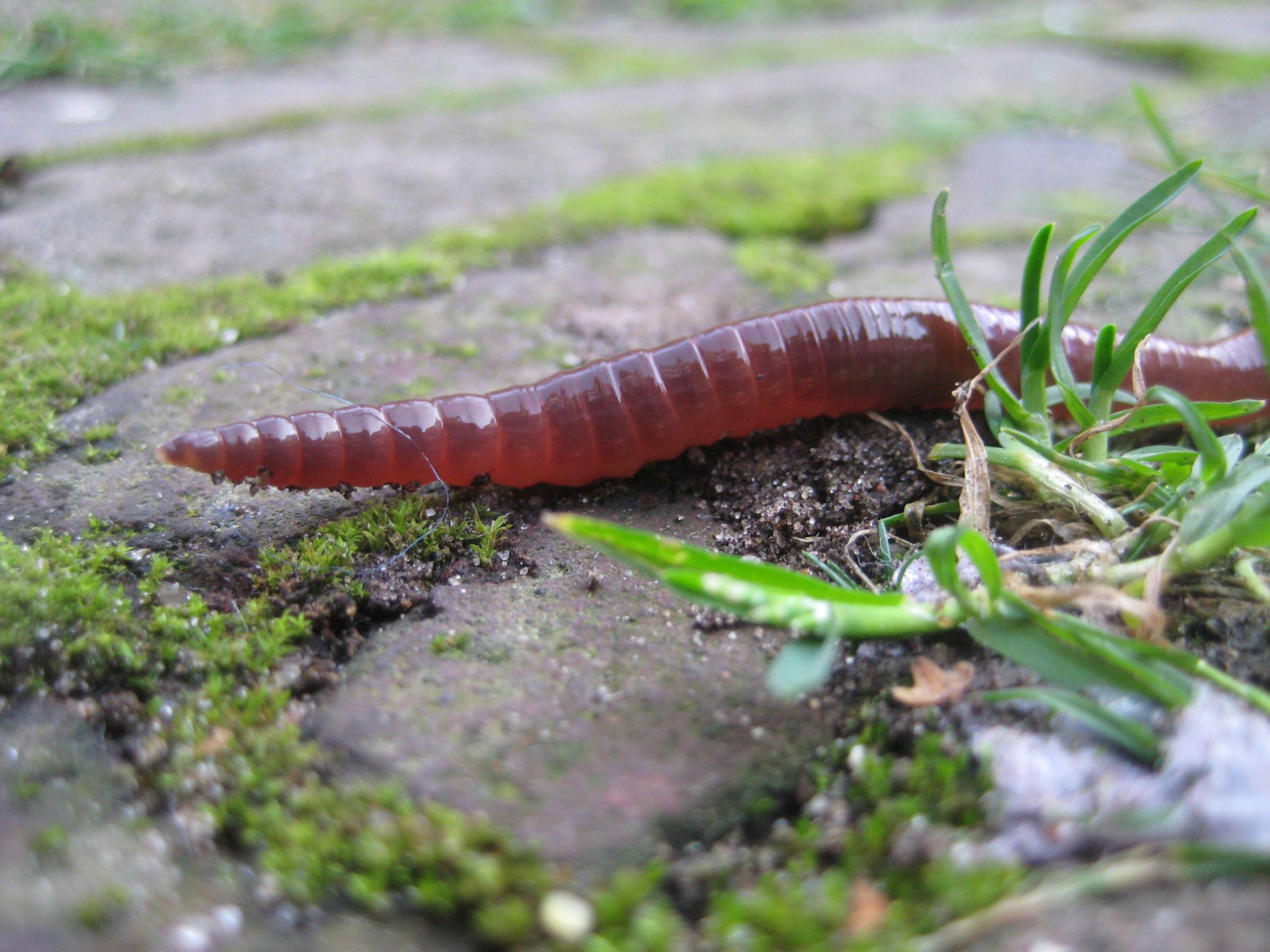
“I tasted a whole variety of bugs and insects in one sitting on the set of Top Chef Masters (season 3). We had guests from the Discovery Channel show Man, Woman, Wild who helped us find our chefs everything from night crawlers, beetles and bugs—the contestants cooked them and I ate the lot! No matter how good a chef you are, it’s pretty challenging to cook with these ‘ingredients.’ There were some really good attempts and some that just didn’t work unfortunately. I actually still have a memory of biting into a worm omelet and feeling the grit in the worm. All in a day’s work I guess!”
Curtis Stone is an Australian chef, television personality, author and chef/owner of Maude restaurant in Beverly Hills
Paul Landkamer’s Marinated Stink Bugs

“Boil for about 5 minutes, then simmer the boiled insects in a Cajun sauce before dehydrating. Marinate about 24 hrs in a favorite sauce, then dehydrate to a crispy crunch.”
Paul Landkamer is an edible insect enthusiast
More Must-Reads from TIME
- Donald Trump Is TIME's 2024 Person of the Year
- Why We Chose Trump as Person of the Year
- Is Intermittent Fasting Good or Bad for You?
- The 100 Must-Read Books of 2024
- The 20 Best Christmas TV Episodes
- Column: If Optimism Feels Ridiculous Now, Try Hope
- The Future of Climate Action Is Trade Policy
- Merle Bombardieri Is Helping People Make the Baby Decision
Write to Mandy Oaklander at mandy.oaklander@time.com